Let it never be said that the Spanish don’t know how to party. And the place to party is at the annual local feria, or fair. Every town and city (and some city neighbourhoods) has its own, but one of the biggest and most famous is The April Fair (Feria de Abril) in Seville. Coming two weeks after Semana Santa, the big religious festival leading up to Easter, the fair is an almost pagan celebration of spring, and is all about having a good time. This year the official dates are from Tuesday, April 21 to Sunday, April 26, although in fact things really get going the day before, leading up to the alumbrado, the switching on of the lights, at midnight on Monday.
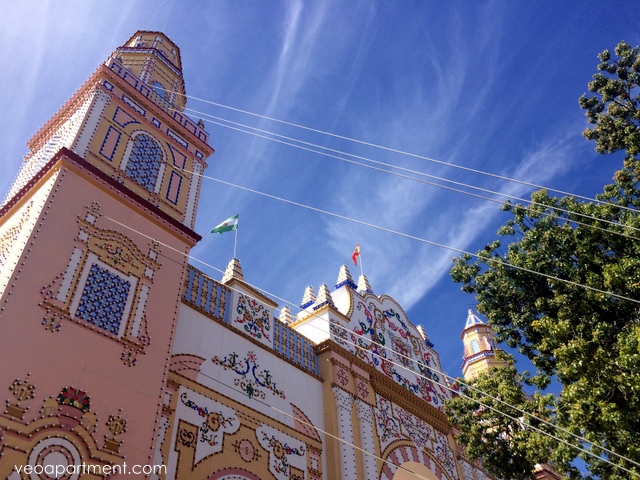 putting the finishing touches on this year’s portada
putting the finishing touches on this year’s portada
But the fair isn’t only about having a good time, it’s also about tradition – though like many traditions it’s not as hoarily ancient as you might think. The first April Fair was held in 1847 (okay, it’s old, but not as old as El Jueves or the Vela de Santa Ana) on the Prado de San Sebastian, and was initially a horse and cattle fair that was a kind of modernised version of mediaeval fairs. It moved to its present location, a purpose-built site on the southern edge of the suburb of Los Remedios, in 1973 (within living memory, so barely a tradition at all), by which time the cattle were long gone, and the fair had developed the character it has today.
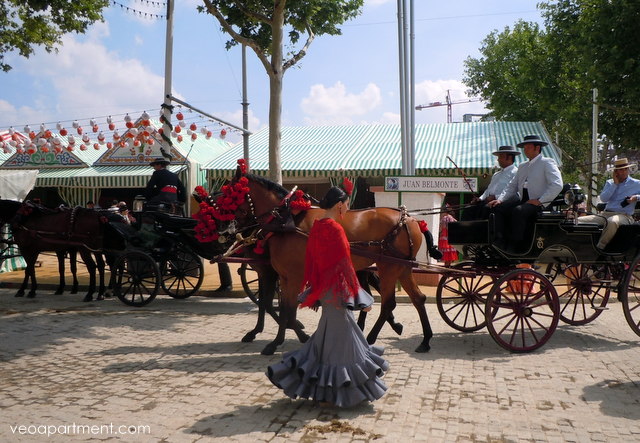 horse carriages and casetas
horse carriages and casetas
So, what’s it all about, and what are some of the traditions that make it so beloved by most Sevillanos? Well, first of all there’s the fairground itself. Even before you arrive, making your way towards it among the hurrying crowds generates a sense of expectation and excitement. You enter the fairground through a specially constructed gateway, the portada, which is rebuilt every year to represent some aspect of Seville (this year it’s the facade of the Bellas Artes Museum). Inside, especially at night with the strings of light bulbs and paper globes, everything is hustle and bustle and that strange combination of the tacky and the magical that is the hallmark of fairs and circuses the world over. The streets are lined with small marquee style tents, called casetas, where people congregate to eat, drink and socialise, though the fact that most of these are private tends to exclude outsiders. You can, of course, get something to eat at one of the fast food stalls, or treat yourself to candy floss or some other sugary concoction.
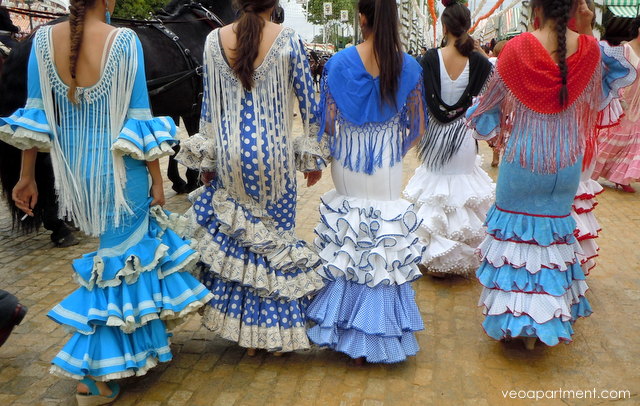 colourful flamenco dresses
colourful flamenco dresses
In many ways there are two fairs. Daytime is for the horses and carriages that parade around the fairground, with the men dressed in the traditional traje corto (short jacket and tight trousers), and the women in traditional flamenco dresses, a time for society folks to see and be seen, so if you like horses and spectacle this is the time for you.
At night is the second fair, the fair of lights and noise, the drinking of many rebujitos (sherry with 7-up) and dancing of Sevillanas (a folk dance with flamenco style music) in the casetas, with traditional fried fish and puchero to ward off hangover, that often carries on until dawn. You should also pay a visit to the Calle del Infierno (Hell Street) funfair, where the younger element can mostly be found, and scare yourself to death on one of the rides. On your way home stop for churros and chocolate, the breakfast for those who haven’t been to bed yet. The fair always ends (officially) with fireworks at midnight on the last day.
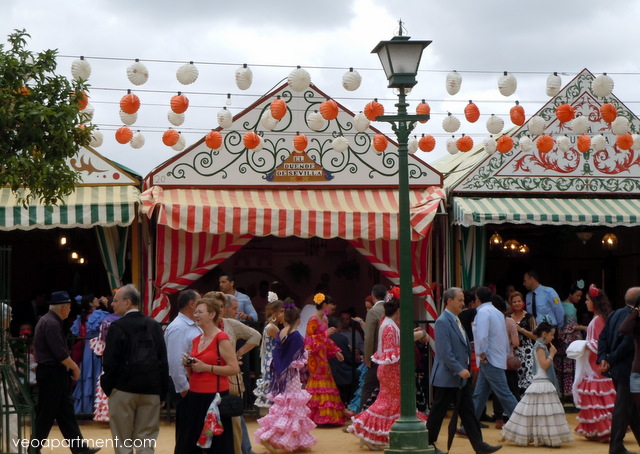 casetas
casetas
The feria is also bullfighting season. Not everyone’s cup of tea, but if you want to experience the atmosphere of a bullfight, tickets are available here.
To get to the fairground you can take a taxi, one of the regular bus services 6 or C1/C2, or the special Feria bus service that runs from the Prado San Sebastian. It’s also possible to walk, especially if you’re in the southern part of the city.
If you’re here for Feria, renting an apartment will give you the flexibility and do-as-you-please freedom to enjoy late nights and sleeping in, as well as seeing more of Seville.
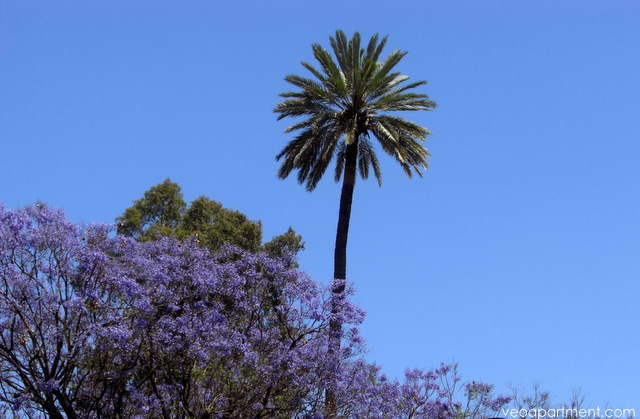 jacaranda trees in blossom
jacaranda trees in blossom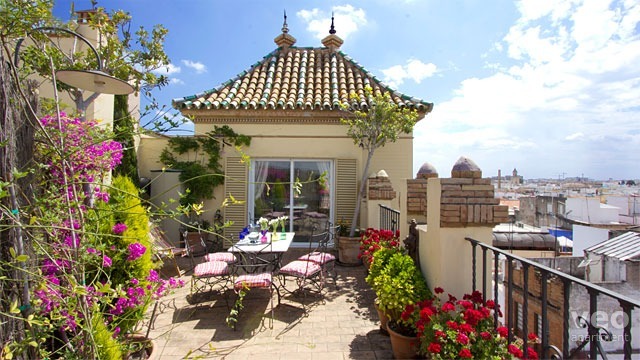 flowering plants on sunny Macarena Terrace
flowering plants on sunny Macarena Terrace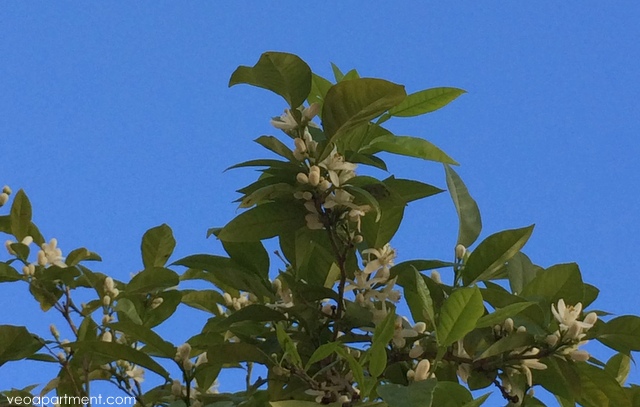 azahar – aka orange blossom
azahar – aka orange blossom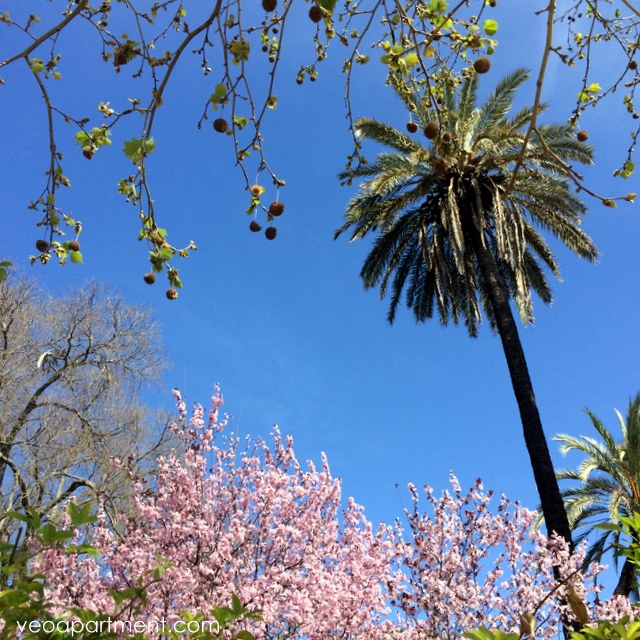 almond blossoms in Maris Luisa Park
almond blossoms in Maris Luisa Park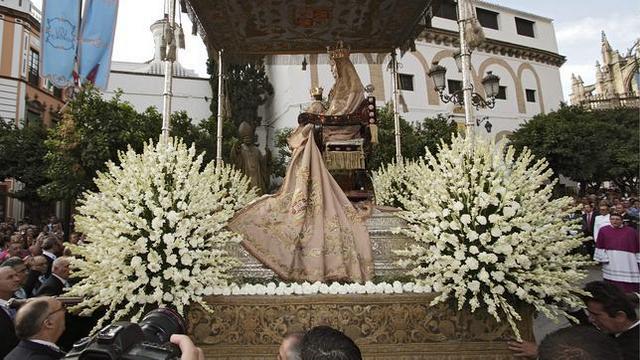 flower-festooned procession float – photo courtesy of
flower-festooned procession float – photo courtesy of 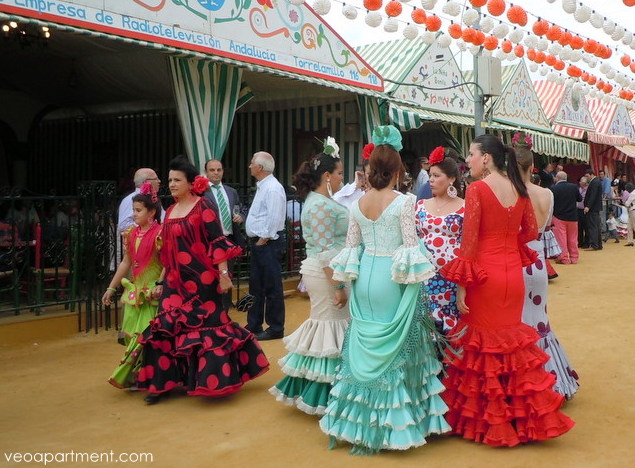 women at the Seville fair with “flowers” in their hair
women at the Seville fair with “flowers” in their hair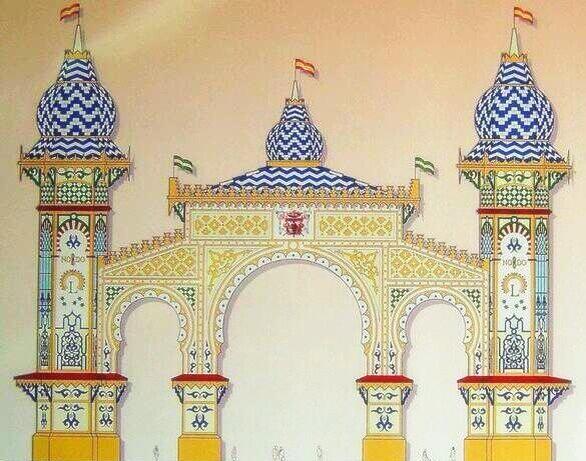 Feria de Abril Portada 2014
Feria de Abril Portada 2014

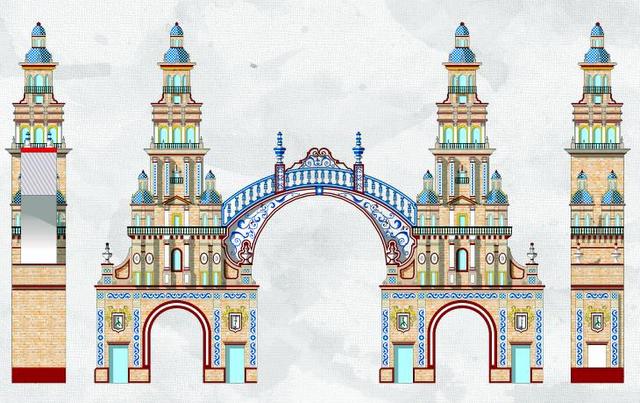
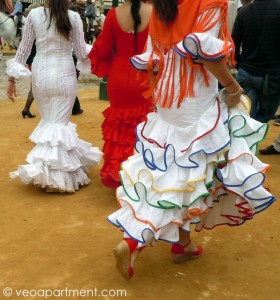 The first April Fair was held in 1847 on the Prado (field) de San Sebastian, just outside the old city walls, which at that time were still standing, and it was initially a cattle and horse fair intended as a modern version of the old mediaeval fairs. Strangely for what has become such a Sevillano event, it was the brainchild of a Catalan, Narciso Bonaplata, and the Basque José María Ybarra. As the years passed the Fair gradually began to acquire the character it has today. The horses and carriages have remained a staple of the fair, at least during the day, as have the traditional traje corto (short jacket and tight trousers) of the men and colourful flamenco dresses of the women, but the cattle are long gone. The first electric lights appeared in 1874, followed shortly by the paper globes that are so typical today, and the first commercial casetas. In 1973 the Feria moved to its present home.
The first April Fair was held in 1847 on the Prado (field) de San Sebastian, just outside the old city walls, which at that time were still standing, and it was initially a cattle and horse fair intended as a modern version of the old mediaeval fairs. Strangely for what has become such a Sevillano event, it was the brainchild of a Catalan, Narciso Bonaplata, and the Basque José María Ybarra. As the years passed the Fair gradually began to acquire the character it has today. The horses and carriages have remained a staple of the fair, at least during the day, as have the traditional traje corto (short jacket and tight trousers) of the men and colourful flamenco dresses of the women, but the cattle are long gone. The first electric lights appeared in 1874, followed shortly by the paper globes that are so typical today, and the first commercial casetas. In 1973 the Feria moved to its present home.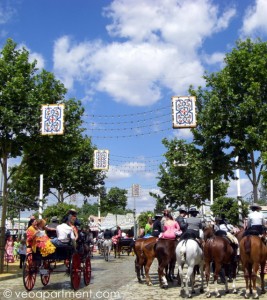 During the day it’s the horses and carriages that take the attention, along with their riders, everything and everyone done up to the nines to parade around the fairground, and for anyone with a love of horses this alone is enough to make Feria worth a visit. At night, however, Feria is quite a different experience. The lights are all switched on, and the party begins. In the casetas there is much drinking of rebujitos (sherry with 7-up) and dancing of Sevillanas (a folk dance with flamenco-style music), that often carries on until dawn. Next to the main fairground, in the Calle del Infierno (Hell Street) is a funfair, with all the traditional rides and typical fast-food stalls.
During the day it’s the horses and carriages that take the attention, along with their riders, everything and everyone done up to the nines to parade around the fairground, and for anyone with a love of horses this alone is enough to make Feria worth a visit. At night, however, Feria is quite a different experience. The lights are all switched on, and the party begins. In the casetas there is much drinking of rebujitos (sherry with 7-up) and dancing of Sevillanas (a folk dance with flamenco-style music), that often carries on until dawn. Next to the main fairground, in the Calle del Infierno (Hell Street) is a funfair, with all the traditional rides and typical fast-food stalls.